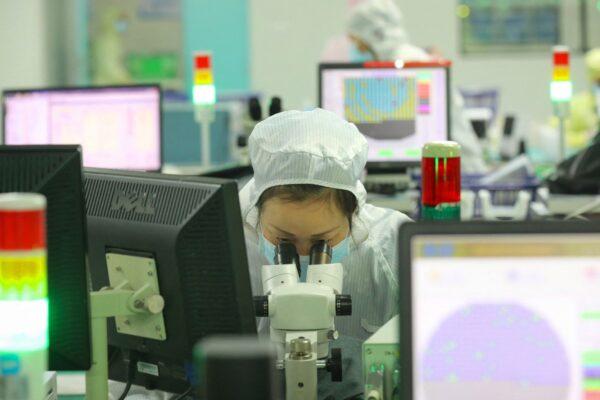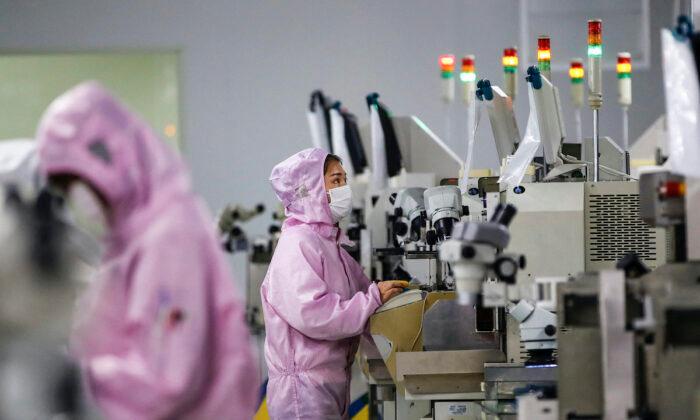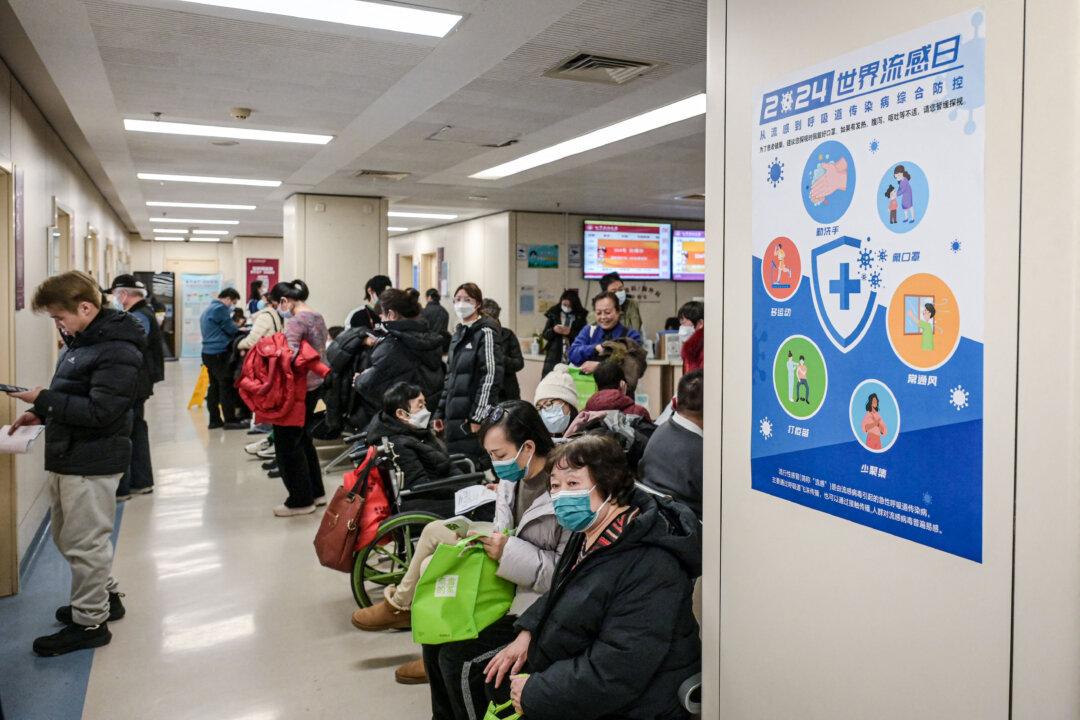The semiconductor chips manufactured by SMIC, the largest and most technologically advanced chip manufacturer in mainland China, have been found by a recent report to be significantly more expensive than the chips made by Taiwan’s TSMC, and the Chinese company’s yield rate is far lower.
Experts pointed out that democratic countries continue to maintain advantages in the field of chip technology, posing a great challenge to China’s ruling Communist Party’s (CCP’s) ambition.
Amid the international sanctions of advanced chips and chip-making equipment against the CCP led by the United States and the Netherlands, SMIC is trying to use existing manufacturing equipment previously imported from the United States and the Netherlands to produce 5-nanometer Kirin chips, as reported by the Financial Times on Feb. 6.
SMIC will produce the Kirin chips designed by Chinese company Huawei’s HiSilicon to be used in new versions of high-end Huawei smartphones. Five-nanometer chips are still one generation behind the currently most advanced 3-nanometer chips.
However, the report also revealed that the price of SMIC’s chips is 40 to 50 percent higher than that of the same level of 5-nanometer and 7-nanometer chips made by Taiwan’s TSMC, and SMIC’s current yield rate—the number of chips considered good enough to ship to customers—is less than one-third that of TSMC.
Chen Liang-chih, an associate research fellow at Taiwan’s Institute for Defense and Security Research, a think tank of Taiwan’s Ministry of National Defense, told The Epoch Times on Feb. 7 that it’s because SMIC’s technology is not advanced enough.
“The proportion of good chips produced is low, and the proportion of defects is high, so it takes more investment and materials, which leads to higher cost.”
Huawei introduced the Qingyun L540 notebook computer at the beginning of this year, claiming that all of the parts were made in China. However, it contains a 5-nanometer chip made by Taiwan’s TSMC, as revealed by Bloomberg News after technology research institute TechInsights dismantled the device. This discovery contradicted the CCP’s claim that China’s chip technology had made a major breakthrough.
Sun Guo-xiang, associate professor of the Department of International Affairs and Entrepreneurship at the University of Nanhua in Taiwan, told The Epoch Times on Feb. 7 that because of the tightening of export restrictions on chip machinery and equipment by the United States and the Netherlands, mainland China currently has no way to achieve market efficiency, “so it resorts to any means to produce the chips without consideration of the cost.”
“But going further, with the next generation of optical technology and the production of smaller nanometers, mainland China will not be able to keep up,” he said.
The CCP has been under continuous technological containment from the West in recent years because of revelations that it has stolen technology from other countries and used advanced technology for human rights violations. The CCP hence has invested huge sums of money in an attempt to establish a “self-sufficient” semiconductor supply chain through a nationwide system.

In October 2023, the Biden administration further tightened export restrictions on advanced chip manufacturing equipment in order to protect national security. The United States also has long-term cooperation with the Netherlands and Japan to prevent the CCP from obtaining the latest chip production tools.
Mr. Sun said that the U.S. chip sanctions against the CCP have already shown effects.
“Mainland China may be able to make some lower-end chips, but it has no way to have a larger market scale or market efficiency,” he said.
TSMC, the world’s largest and most advanced semiconductor maker, officially announced on Feb. 6 that it will build a second factory in Kumamoto Prefecture, Japan. TSMC also plans to build two semiconductor factories in Arizona.
Mr. Chen said that the focus of 2024 would be cooperation between Taiwan and the United States, Japan, and the European Union in semiconductors.
“Democracies can maintain sustained advantages, which is a big challenge to mainland China,” he said. “Xi Jinping has obtained considerable resources from Russia, but Russia is not strong in this area.”
Mr. Sun said that the technological war between China and the United States generally focuses on semiconductors and artificial intelligence.
“When China cannot impose its own standards as world standards, it means that China must catch up with international standards,” he said. “These few years are crucial. During this period, the West, led by the United States, needs to maintain this standard.”






